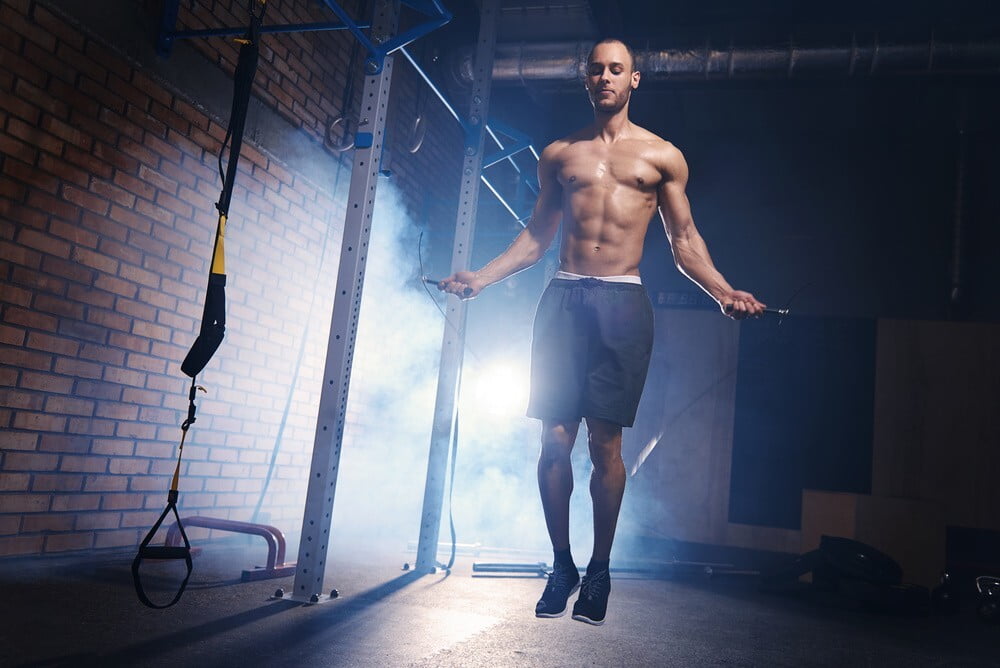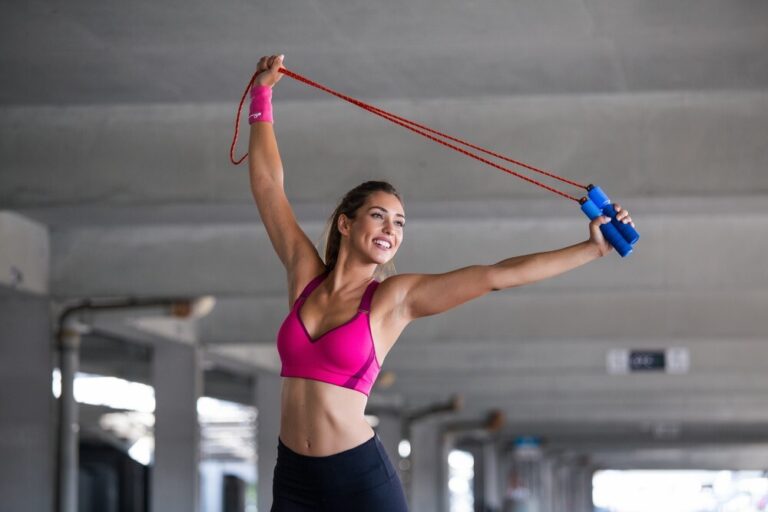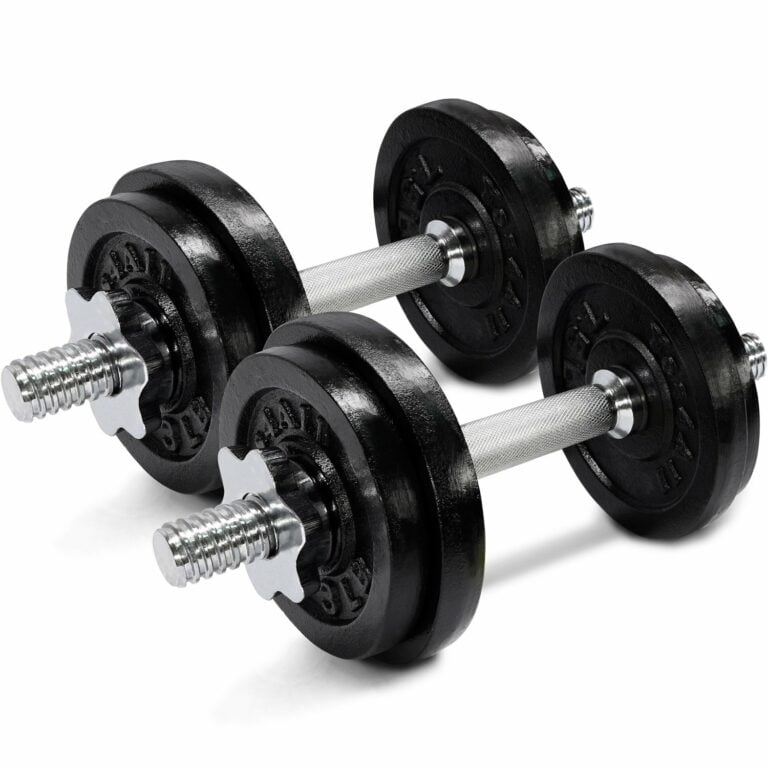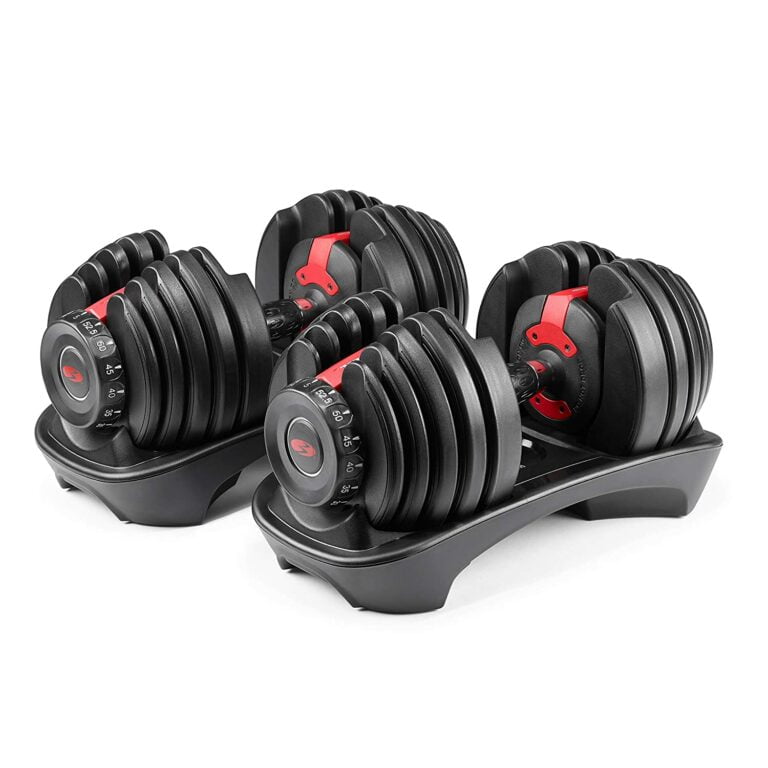Does Jump Rope Help You Jump Higher?
For decades, a controversial idea has been circulating the world: Jumping rope can help you jump higher.
The idea has been that jump rope is similar to the jumping action of a high jumper, and that it is possible to increase your speed and height by practicing.
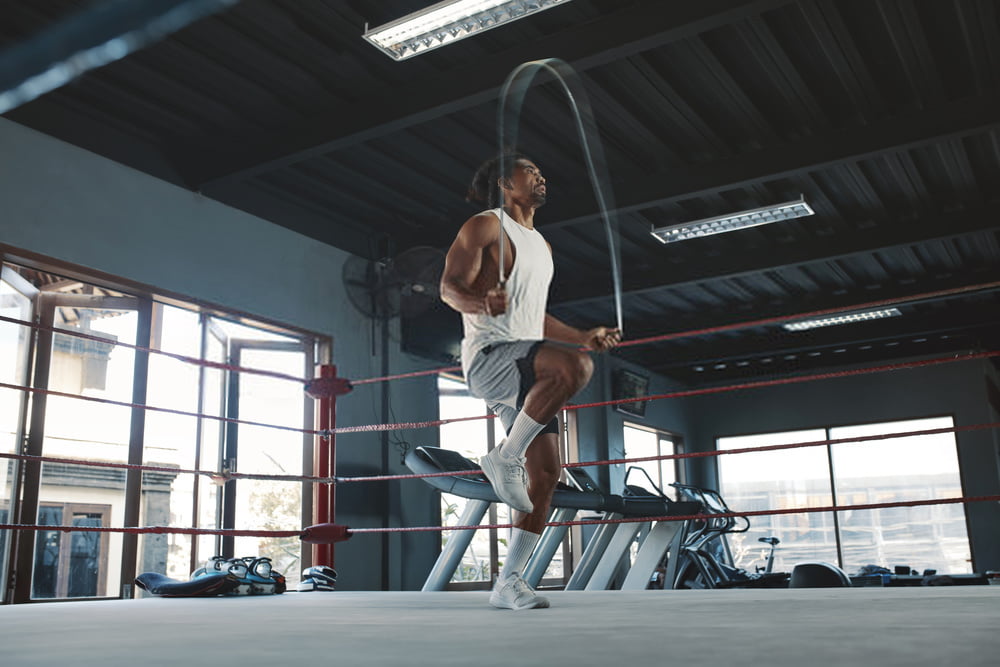
Despite studies suggesting that this claim is not true, many people still swear by jump rope as an exercise for building jumps.
However, people who use jump rope as an exercise claim that the method works because it trains the muscles of your legs, hips, and abdominal muscles – three major muscle groups that control jumping.
Let’s see how jump rope training improves jumping ability:
- Plyometrics – A jump rope is not just a simple piece of equipment; it can help you build explosive strength. Jumping rope can help you do plyometrics. Plyometric exercises are movements that cause the muscle to contract quickly and forcefully, like the stretch-shortening cycle that occurs when a person jumps off the ground.
- Strength Training – Jumping rope also can help with strength training. It places strain on your lower and upper body muscles, which encourages them to get stronger.
- Flexibility – Jumping rope is also considered a form of stretching because it requires you to move quickly in various ways and helps you develop better balance and coordination. This flexibility gained from jumping rope can help with other types of exercise, such as running and diving, which require quick body movements.
- Coordination – Jumping rope makes you more aware of what is going on around you. As you jump, your eyes will be watching the rope as it moves in a continuous loop from one hand to another, and your feet will be scanning the ground for stationary objects. You will have to coordinate your upper body movements with the ropework and your feet with the ground’s movements to control the jumping process.
How can rope jumping increase the vertical jump?
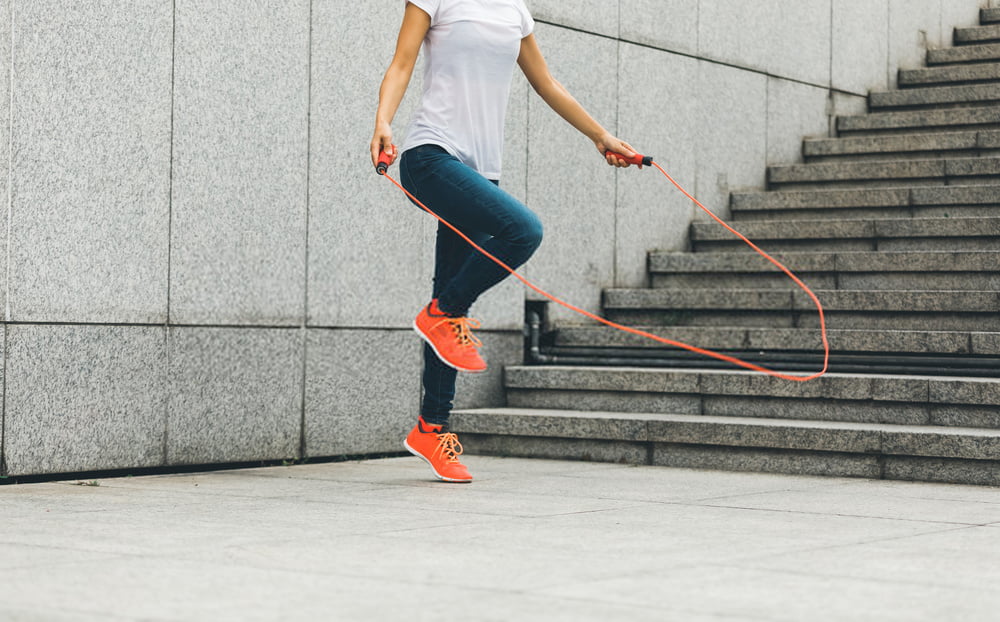
Jumping rope improves your overall jumping ability because you practice your vertical jump almost every time you use it.
This theory is considered more plausible than the common belief that jump rope builds explosive power, as it is a continuous motion.
The legs have to work all the time, instead of a short period of exertion followed by rest. So how does this translate into more explosiveness?
The reasoning goes like this: Every time you use your legs to make a high jump, the muscle fibers are stretched and then contracted again. This action promotes the growth of muscle tissue, which in turn makes the muscle larger and stronger.
As the muscle gets larger and stronger, you can jump higher. To test this theory, researchers conducted a study in which they measured the vertical leap of an athlete before and after eight weeks of jumping rope.
The results showed that the jump height was increased by 4.6 inches during the training period.
Jumping rope strengthens jumping muscles, including the calves, quadriceps, hamstrings, and glutes. It also builds explosive power by constantly firing your leg muscles.
High intensity rope jumping helps you develop coordination and endurance, making it easy to incorporate into your exercise routine.
The core strength that you build by jumping rope also helps with balance and posture. It helps in vertical movements such as swinging a golf club or clearing an obstacle.
You can also use a jump rope in your everyday life, for example when you climb a ladder quickly or jump up to retrieve a child from the second-story window
When you jump rope, your muscles are constantly stimulated even while resting. This causes an increase in the growth of your muscles and helps to build a strong core. It also keeps your muscles fit so that they are always ready to jump higher than before.
Thus, jumping rope is an effective exercise for building strength and building explosive power and good posture.
There are several portable jump ropes on the market today that you can take with you when traveling. Some of these portable jump ropes have clips so that they can attach to your belt or a bag strap and others are even small enough to fit in your pocket.
The over-striding of a high jumper is one of the most difficult styles to master. It requires an ideal length of the stride, where one leg has enough time to recover before it leaves the ground again. Your knee should almost be straight during a jump when it leaves the ground, although your foot should still be flexed.
This means that you have to practice keeping your body light and on tip-toes when landing from a jump to get that springy rebound.
The same concept applies to shot putting and hammer throwing, two sports that involve swinging an object over the head repeatedly for as long as possible or as far as possible.
Other benefits of rope jumping
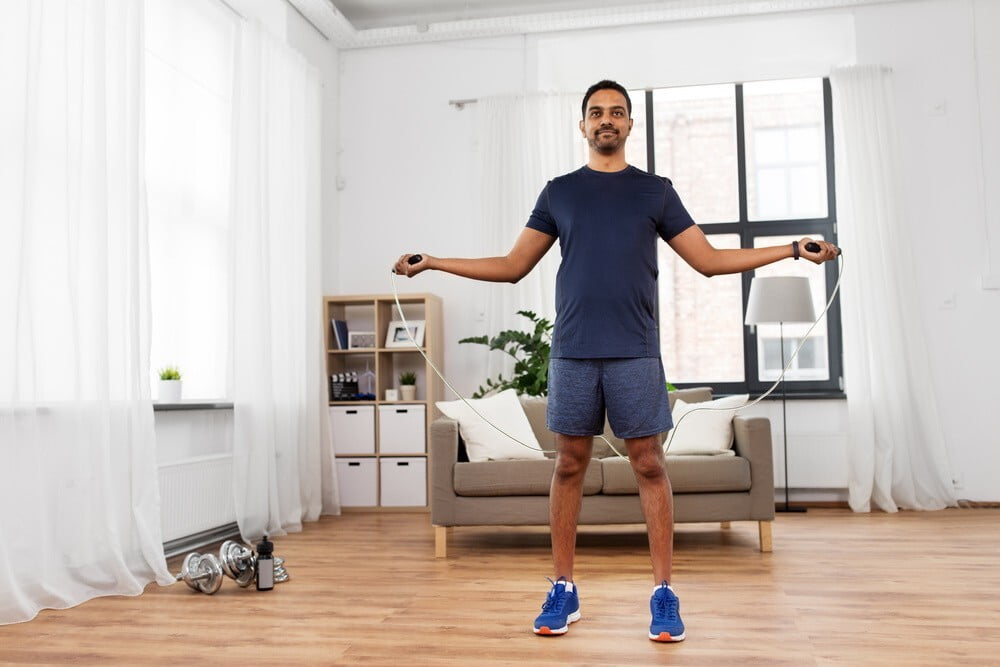
Besides increasing your vertical jump, jumping rope also offers you several other benefits that include:
- It helps you burn calories.
- It tones and sculpts the muscles.
- It improves ankle flexibility.
- It improves coordination and rhythm.
Aside from jump height, jumping rope can also be used to improve sprinting ability and conditioning for sports such as basketball, soccer, football, hockey, tennis, etc. Gymnasts also use it for lower body muscles training!
HOW TO INCORPORATE ROPE JUMPING INTO YOUR WORKOUTS
To get the most out of your rope jumping sessions, try these tips:
Learn how to do a proper jump rope movement first.
The ropes can be very distracting when you’re first learning, so if you aren’t sure how to jump with them yet, go find a flat surface and practise your footwork a bit by yourself before attempting to use it with the ropes attached.
Rope jumping is different from other forms of exercises because, unlike most others, it requires you to rotate in place constantly while performing continuous movements. This means that your feet will be moving fast throughout the entire routine and not just during certain parts of it.
Do rotating jumps, not just up and down.
By exercising on a flat surface, your body becomes stabilized. However, when you add a rope to the mix, it’s important to try to keep your center of gravity balanced while performing jumps.
A good way to do this is by the high speed of your jump and trying to maintain your balance during midair instead of landing on only one leg.
Trying different jumping patterns will help you with coordination.
You can perform jumps with rope jumping several different ways, and each can teach you something about coordination and posture that will be useful in other forms of exercise or professional sports.
Try it at first with your hands off the rope to warm up.
Some people are scared of trying rope jumping while holding onto a rope, but there’s no reason to be afraid since you don’t hold onto the ropes during difficult jumps (Which can be done while still holding onto the rope).
By warming up your hands and arms first, you’ll be able to build up the strength and coordination required for a good jumping pattern without losing your balance.
Conclusion
If you’re trying to increase your vertical jump, give rope jumping a try! If you’re not trying to improve your vertical jump and are simply looking for a fun new workout routine, rope jumping is also a good way to go.
As long as you understand how the muscles work when performing jump moves, and dedicate yourself to doing it properly, you will see results in no time at all.
Plus, jumping rope is a great way to pass the time if you’re at home alone or looking for some fun ways to exercise and get fit. Check out our other fitness articles on this site to help you along the way.
Do you think rope jumping is effective? If so, why? If not, why not? Let us know in the comments below!
